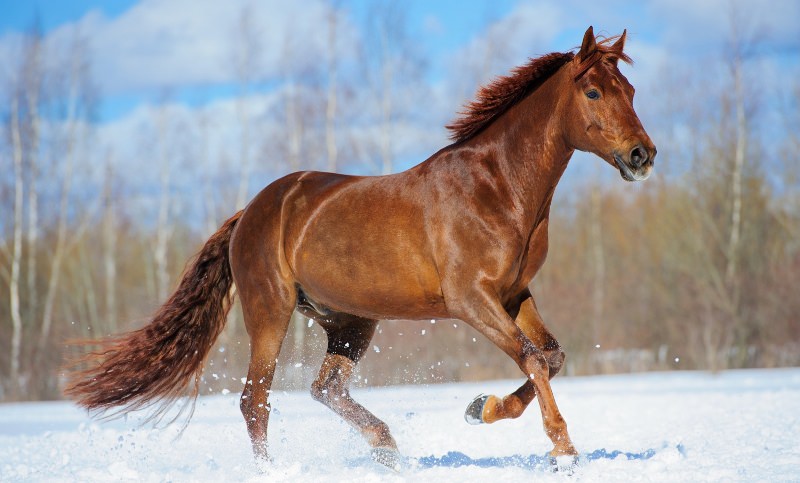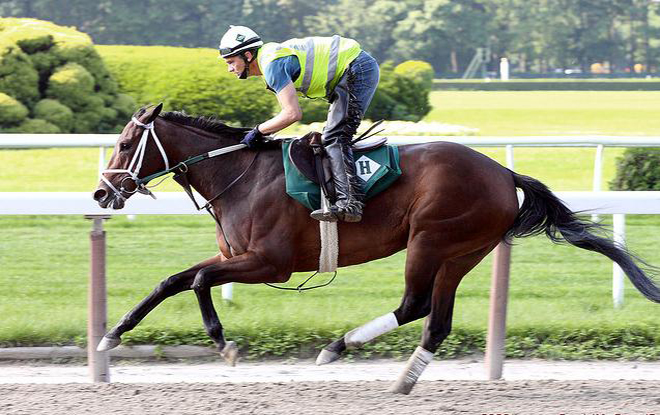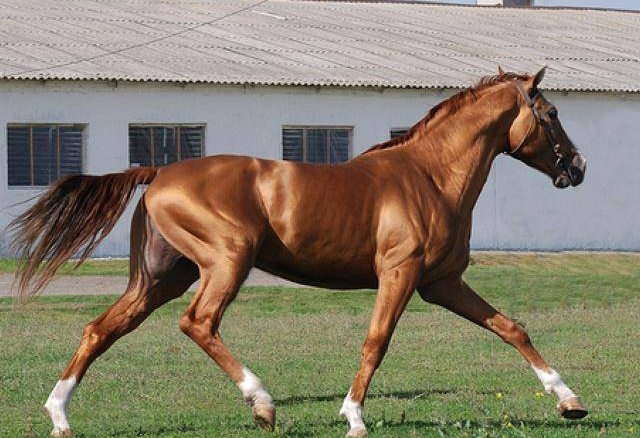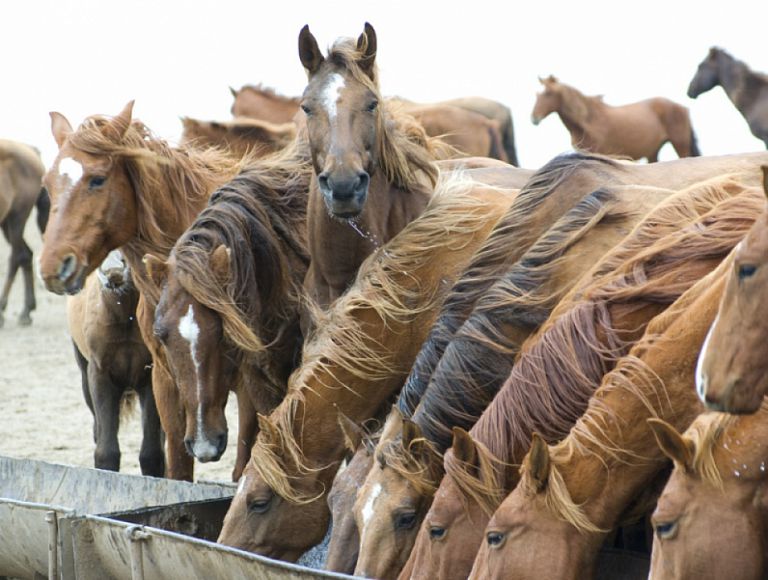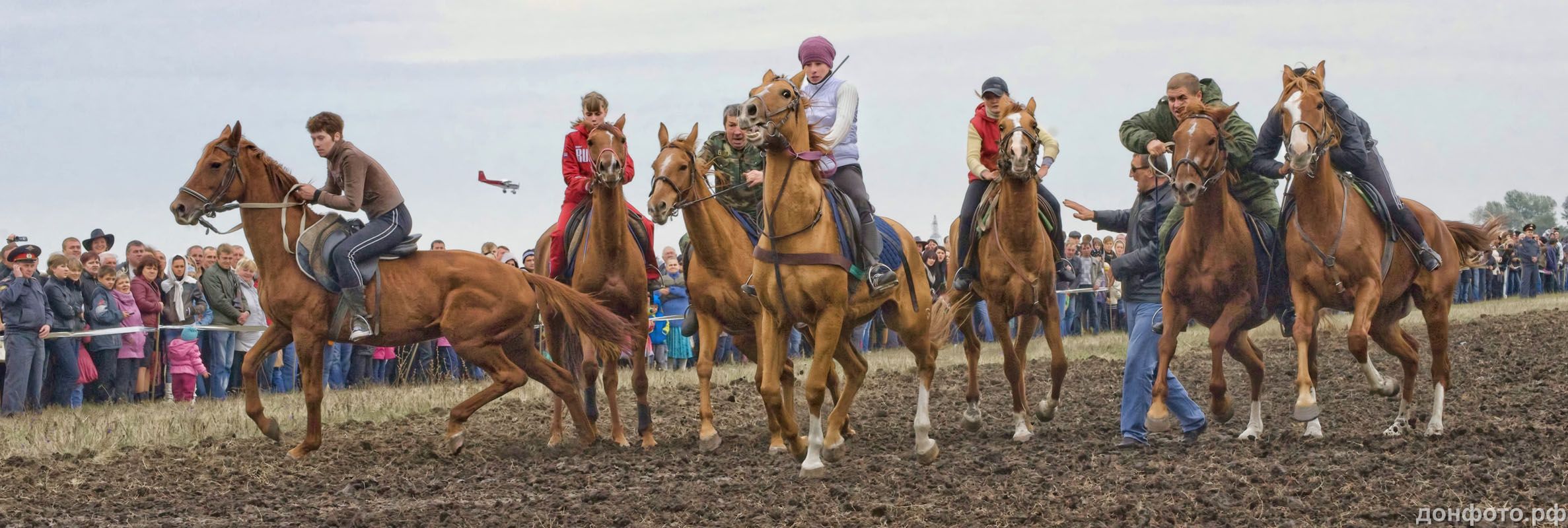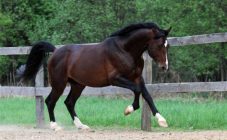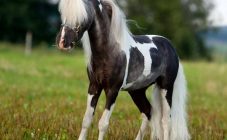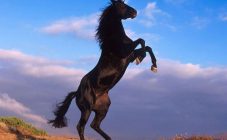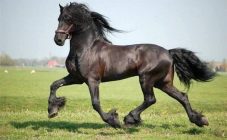Content:
The history of the Donchak is as old as the history of the Cossacks and even the Don itself. Studs and descriptions of bred breeds in the Cossack steppes appeared in the 18th century. Their pets in their qualities fully met the requirements of the Cossacks - farmers and warriors. Horses grew up undemanding to feed, hardy. In addition, the animals were distinguished by longevity. On average, representatives of the breed lived up to 20 years or more. The Cossacks did not have a goal to get horses as a result of selection. The harnessing and riding qualities of horses were important to breeders.
A bit of history
The inhabitants of the present Rostov region Platov and Ilovaisky were the first to engage in breeding and selection of the Cossack steppe breed.
It was a long-term process, as a result of which the modern Don horse appeared.
The Don horse breed successfully performs in sports, especially in sled races. Also good at learning to ride, the breed is great with children. Horses are used in medical rehabilitation for many diseases.
Breed development
At the beginning of the 19th century, two types of Don horses existed in parallel. The former were almost identical to the base breed. Ugly, with a humped head, short (no more than 150 cm at the withers), but extremely hardy and agile. The colors of the steppe were different, but mostly dark.
As a result of crossbreeding, in each subsequent generation, an improved copy of the local breed was obtained. And, in the end, it turned out a stately, tall (up to 165 cm at the withers) and beautiful, oriental-looking horse. It is worth noting one of the obtained suits - a golden tint with a dark bronze mane and tail.
With a radical change in the exterior, she retained all the positive qualities of the steppe progenitor. It is also hardy and undemanding to care, it is a long-liver.
Already at the beginning of the XX century, at the All-Russian exhibition in Rostov-on-Don, Don horses of a wonderful golden suit won the title of "National Heritage of Russia".
Characteristics of the Don horse breed
The expanses of the steppe made this breed very hardy. The need to travel long distances without rest, in any weather conditions, requires energy-saving movement from animals. Their well-developed musculature, strong legs and sturdy hooves allow them to overcome strong winds and deadly blizzards. Helps to get food on the way.
Representatives of the steppe breed have excellent eyesight. Moreover, the location of the large eyes themselves allows them to increase the view.
If you more accurately describe the breed characteristics, then the Don horse looks like this:
- Suit. Orange-gold, pure red. Rarely can you find black and mousey individuals. Sometimes redheads can have light spots on their legs and head.
- The average height of the animal is 165 cm at the withers.
- The structure of the body.Long body (about 1.65 m), broad chest (girth 1.95 m) and sloping croup, broad back, high, strong legs, firm and strong hooves. The head is dry, graceful, slightly humped. Despite the massiveness of the body, Donchak horses look graceful and easy to move.
Horse appearance
First of all, the Donchaks are beautiful. Further, you can list the advantages in parts. They are large, red and brown in color. Sometimes the wool is cast in gold. At the same time, the tail and mane are darker. There are representatives marked with white spots on the forehead and headstock.
A beautiful, broad-forehead head, eyes set wide apart, expressively large. Ears are sharp, voluminous and mobile nostrils. The neck is arched, with a crest-like withers. Wide and sloping body. The back is long and broad, strong, open chest, strong, long and hardy legs.
The nature and disposition of the representatives of the breed
Domesticated horses are generally calm in nature. The same applies to the Don breed. Small changes in behavior can be caused by the conditions in which the animal is kept. With herd keeping, there is some freedom of love, restiveness, fearfulness. The Donchak's character cannot be called just bad.
Feature of the breed: when kept at home, the horse is affectionately attached to the owner or to all family members and serves faithfully.
This also explains the use of representatives of the breed in equestrian sports schools for teaching horse riding (including children).
Donchak care
A thoroughbred Don horse requires special care. Three times a day, you should tidy up the hair, wipe the eyes, nostrils with a damp sponge, clean the hooves.
For caring for an animal, it is recommended to have:
- hard brush;
- soft brush;
- plastic comb;
- hoof hook;
- woven napkins;
- hair clipper.
Brushing starts from one side of the head towards the rump. Then the same thing must be repeated from the other side.
Your feet require special care. After each walk, a thorough examination of each is required for wounds and other injuries. All hooves are crocheted, washed and wiped with a napkin.
Perfect cleanliness is also needed in the stall. Serious wet cleaning is required once a day, during the absence of the guest. The horse is put into the stable after aeration and new bedding (straw, for example).
Feeding and diet
Horses are herbivorous mammals. The main diet is hay / grass. The consumption of herbs on average by one horse reaches 15 kg per day. The second most important is oats. It is even hung from the horse's face when resting, because the horse's breaks between feedings are not long. This is due to the work of the animal's gastrointestinal tract. There should always be some food in the intestines.
In the stable / levada, the presence of salt is necessary - slime. These briquettes are made especially for animals. There are variations with the addition of minerals and trace elements. Animals must have free access to them at all times.
In addition to the above, the diet is expanded with the available seasonal vegetables, root crops and fruits.
Much attention is paid to the watering of horses. Free access to clean water is also required. The exception is moments immediately after heavy loads. Don horses just fall into this category. In this case, the animal must catch its breath and rest for about an hour. Only then you can drink it. Otherwise, there is a great risk of drinking more fluids than necessary and harming your health. And in a calm state, horses completely control the amount of water they drink. In this case, ice water should be avoided.
Don horse in the modern world
A purebred Donchak, in modern times, is on the verge of extinction. This is facilitated by the industrialization of industry. Now you can't even find a uniform - Don herds. A small number of representatives of this breed can be seen in mixed schools.
Despite their outstanding endurance, Don horses are inferior to racehorses in speed, and to draft breeds in strength. Also, the exterior and body weight do not allow them to be attributed to the meat direction. Although the historical nomadic peoples have a high demand for horse breeding products. It even rises every year. But to breed such beauty as Donchaks is at least inhumane for slaughter.
Meanwhile, there is a huge area of their practical use. These are such areas as:
- tourism industry;
- mounted police;
- equestrian sports schools;
- rehabilitation of patients with musculoskeletal disorders (for example, cerebral palsy).
With proper planning of the use of Don horses, there is hope for the restoration of the non-critical size of the breed.
